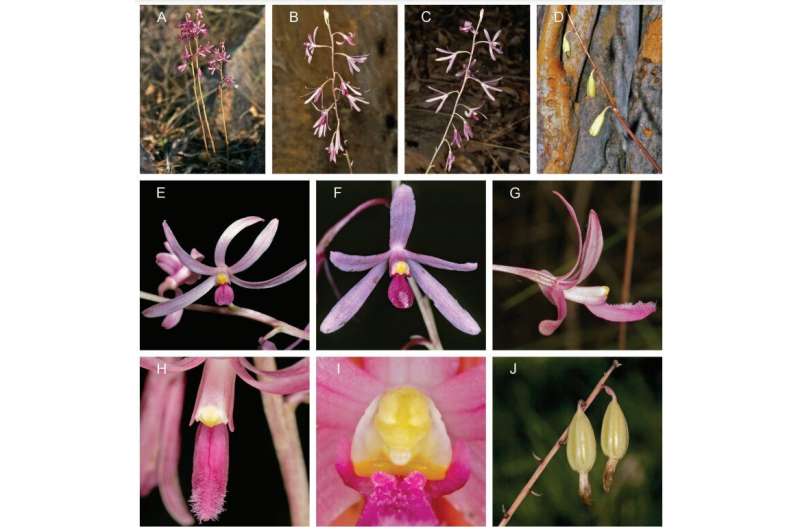Three decades of research culminates in more unique orchid species

Researchers have spent 30 years searching the rugged Kimberley region of Western Australia for orchids, with their work finally culminating in a paper published in Telopea.
They used helicopters, 4WDs and quad bikes to traverse through remote territory, so far locating three tree orchids and 17 ground orchids.
Australian Institute of Botanical Science researcher Dr. Russell Barrett said with the Kimberley having a strong seasonal climate, including a nine-month dry season, it was easy to think there was little habitat available for orchids.
"Finding orchids in such a remote region can be a slow process, and this research has taken 30 years to reach publication," he said.
"Many people have assisted with the search over the decades, particularly Kimberley locals Robin and Butch Maher, both with a keen eye for potential habitats, and crucially, a helicopter at hand.
"One of the key challenges in understanding species diversity has been the many connections between the Kimberley, South-east Asia, and other parts of northern Australia."
Four new species are described in this paper, three endemic to the Kimberley region, Calochilus kimberleyensis, Dipodium ammolithum and Dipodium basalticum, while Calochilus barbarossa is also found in the Northern Territory.
"A few species remain very poorly known in the Kimberley, with only a single location known for three of the ground orchids, Habenaria hymenophylla, Spiranthes sinensis, and Zeuxine oblonga," Dr. Barrett said.
"Only a single site has been recorded for the tree orchid Dendrobium foelschei, but the population was subsequently killed by a hot fire that scorched the Melaleuca trees it grew in, so this species may no longer occur in the Kimberley."
Dr. Barrett said feral animals such as pigs could also destroy orchids and their habitats.
"Many orchid relationships remain poorly understood and new genetic data is likely to lead to additional name changes in coming years, and perhaps even additional species," he said.
"Orchids such as Habenaria eurystoma occur in very discreet areas in Western Australia, the Northern Territory and Queensland, separated by 1,000 km or more.
"It remains to be determined how long these populations have been separated, and whether more than one species should be recognized. Genetic data is likely to be crucial in answering such questions."
Dr. Barrett said they hoped the paper would increase understanding and appreciation of Kimberley plants and landscapes and promote further research.
Royal Botanic Gardens and Domain Trust Chief Executive Denise Ora said the research the Institute was undertaking was critical to understanding and conserving our environment.
"Across the country and globally, our scientists are ensuring more is discovered about plant species so we can continue to protect them," she said.
More information: Russell L. Barrett, Matthew D. Barrett and Mark A. Clements, A revision of Orchidaceae from the Kimberley region of Western Australia with new species of tropical Calochilus and Dipodium, Telopea (2022). DOI: 10.7751/telopea15711. openjournals.library.sydney.ed … cle/view/15711/13998
Provided by Australian Institute of Botanical Science





















